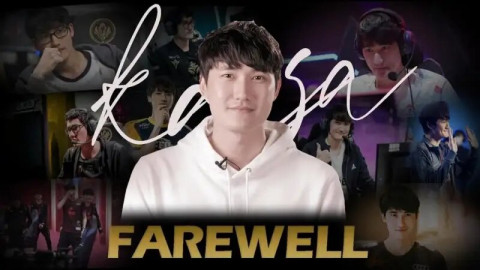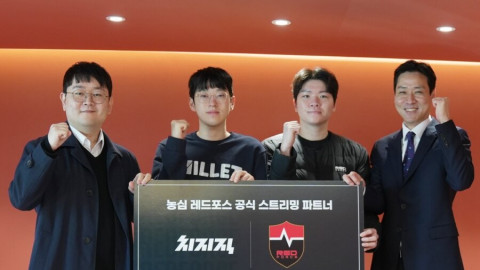
Disclaimer : The following article was written freely based on the author's opinion, and it may not necessarily represent Inven Global's editorial stance.
This year’s E3 featured several high-profile game announcements, including Electronic Arts pulling back the curtain on Anthem and Ubisoft re-revealing Beyond Good & Evil 2 to the world. The aforementioned games don’t have final release dates yet, and we expect to see them again at next year’s E3, but a number of other games shown off last week will be released in 2017. As usual, we learned that a large portion of them will be releasing within just a few months of each other. From Wolfenstein II: The New Colossus to Middle-earth: Shadow of War, players are about to be hit with an absolute tidal wave of new releases this October and November, and unfortunately for both publishers and players, several of them are bound to be overlooked simply because of their proximity to other, bigger titles.
November is notoriously packed with high-profile game releases from the major publishers, with Ubisoft, Electronic Arts, and Activision almost always launching at least one game before Black Friday rolls around. That crowded lineup may have actually impacted the sales of games that released at the end of October 2016. Titanfall 2 launched on October 28, just a week after Battlefield 1 and just a week before Call of Duty: Infinite Warfare. Though Titanfall 2 was, by far, my favorite game of the three, it was doomed from the beginning. Both Battlefield and Call of Duty had name recognition that Respawn’s science-fiction shooter just couldn’t match, and even though it delivered the most interesting campaign and was the only game of the three to offer all map packs for free, it didn’t meet sales expectations.

Action-adventure sequels Dishonored 2 and Watch Dogs 2 released just a week apart from each other in November of last year, and both games failed to hit the sales figures of their respective first installments. In the case of Watch Dogs 2, the problem was a little more complicated than just the release date – the original Watch Dogs was seen as a pretty massive disappointment, and players appeared to take the “fool me once” approach to the much-improved sequel. But the first Watch Dogs launched in May 2014, a month that had the release of just Wolfenstein: The New Order and Mario Kart 8 to contend with. Watch Dogs broke launch records for a new franchise and Wolfenstein was a surprise hit for Bethesda – this wasn’t a coincidence. The original Dishonored was similarly blessed with light competition in the weeks surrounding its release date, with the poorly-received Resident Evil 6 and reboot XCOM: Enemy Unknown the only big-name games vying for players’ attention and cash. Again, sales numbers were higher than expected. Bethesda turned Dishonored into a franchise, only to be disappointed with the sequel’s numbers. If only if the sequel had been given the buffer room it needed to attract significant buzz, the story could have been different.
Though rarer, this crowded release date problem can also occur outside of the normal holiday rush. August typically isn’t a huge month for new game releases, but in 2013, three of them were out on the same day. Saints Row IV released less than two years after the popular Saints Row: The Third. Splinter Cell: Blacklist was the first game in the series since 2010, and The Bureau: XCOM Declassified was a spinoff to a series that had just been rebooted a few months earlier. It doesn’t take a lot of thought to figure out which game succeeded. While Saints Row IV sold a million copies in just a week, both Splinter Cell and The Bureau underperformed. In the case of The Bureau, the game itself was terrible, but Splinter Cell was not. Had its release date been pushed up by just a few week, it’s likely that more players would have been willing to give its stealth-action a chance.

But the crowded release schedules aren’t just bad for those making and selling the games – they’re even worse for those playing them. In the United States, the October and November game release tsunami is followed just a few weeks later by Black Friday. Though 40 percent off a game like Dishonored 2 or Call of Duty: Infinite Warfare sounds like a no-brainer, the games will still cost shoppers between $30 and $40 because that discount is applied to a full-priced product. Should just a few of these games delay their release until the following year – or, if possible, pushed it forward into September – prospective players will be more likely to find genuinely good deals.
With the growing tendency to include multiplayer as an integral part of the experience, even in story-driven games, publishers actually risk making their game experience worse for players if they release it too close to other titles. It can take just a month or two for bots to fill up teams’ empty spaces – just look at For Honor – and with so many other options to choose from each November, the less-popular games risk their lobbies becoming completely barren. Occasionally, they can bounce back with dedicated players, but others have continuously seen a huge dropoff in players just a week or two after launch. Halo 4 is perhaps the most notorious, launching a week before Call of Duty: Black Ops 2 and experiencing a massive hemorrhage in users as they all migrated to Activision’s shooter, instead.

It wouldn’t be worth complaining about the holiday games rush if publishers showed any sign of ending it in favor of more consistent releases over the course of the year, but this has unfortunately not been the case. This autumn could be the most crowded we’ve seen in years, with South Park: The Fractured But Whole, The Evil Within 2, Forza Motorsport 7, and Middle-earth: Shadow of War all releasing in October. Three games – Assassin’s Creed Origins, Wolfenstein II, and Super Mario Odyssey – are releasing on the same day in October. November is just as ridiculous, with Call of Duty: WWII, Crackdown 3, Need for Speed Payback, and Star Wars Battlefront II all releasing within a two-week window.
Publishers can’t possibly think their games will see as well as possible when they have this much competition to go up against, and most players won’t be able to purchase so many titles at one time, particularly when they’re also gift-shopping for loved ones. Confidence and a certain amount of bullishness in one’s product can certainly go a long way when marketing it, but at a certain point, you need to understand when to concede if you want your game to be enjoyed by a large group of people. Without doing so, a game like The Evil Within 2 could be “that game I didn’t play because Middle-earth just came out.” That isn’t something any publisher wants to hear, and players risk missing out on what could otherwise by a surprise favorite.

Sort by:
Comments :0






